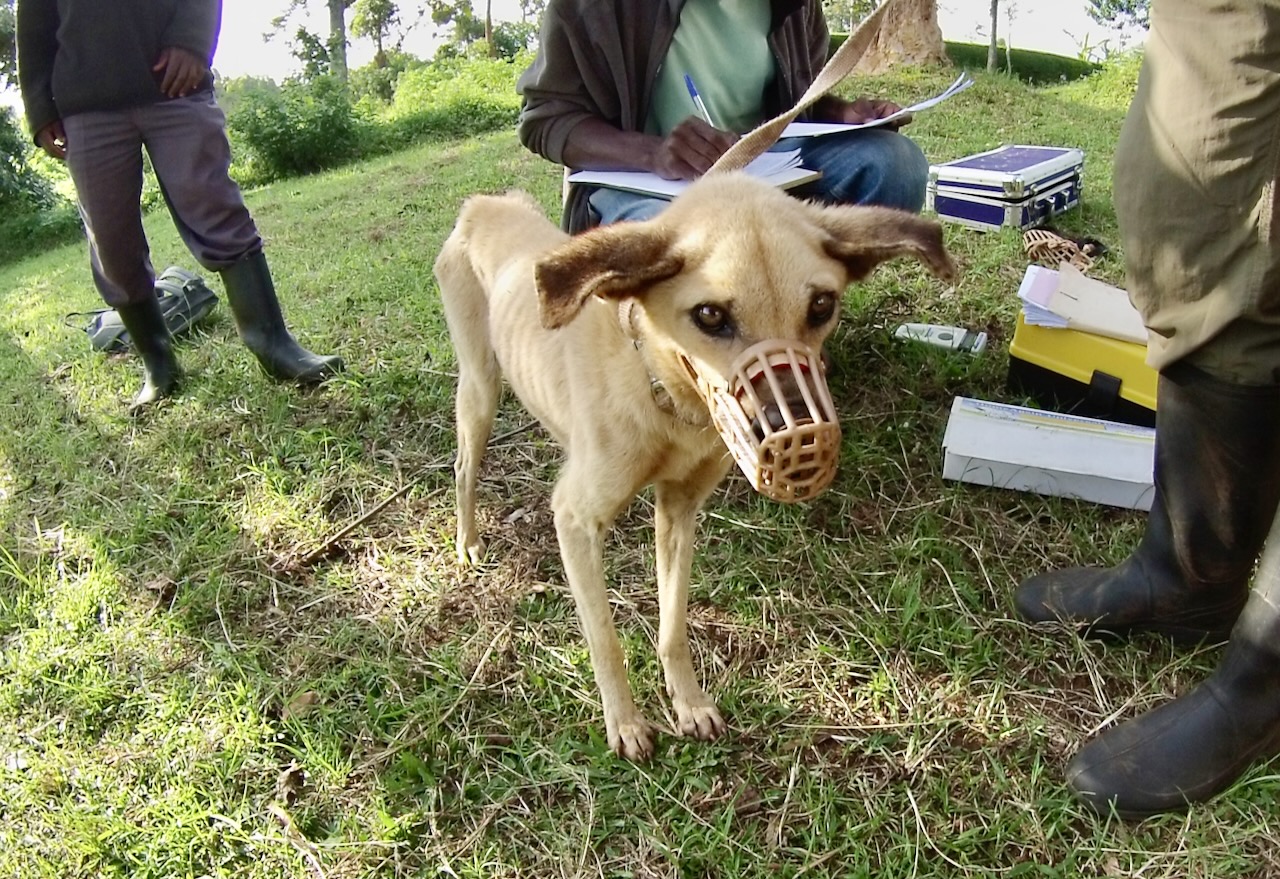The hidden viral world of dogs that hunt wildlife
Posted on October 17, 2024 by Dickson Stuart Tayebwa and Tony Lawrence Goldberg
Dickson Stuart Tayebwa and Tony Lawrence Goldberg take us behind the scenes of their latest publication 'Viruses of free-roaming and hunting dogs in Uganda show elevated prevalence, richness and abundance across a gradient of contact with wildlife' published in Journal of General Virology.
“It’s a dog’s life” – and nowhere is that more true than in Uganda. In this equatorial East African nation, most dogs spend their lives guarding homes from intruders or fending off wild animals from farmlands. Many of these dogs are free-roaming, in that they have no definite owner and live a semi-nomadic life, eking out a meagre existence. Most live only a few years due to the struggles of finding food, sustaining injuries and carrying a high burden of infectious diseases.
Nevertheless, dogs in some Ugandan communities are integral parts of society. Certain members of the Bwamba and Bakonjo tribes in western Uganda, for example, rely on highly trained dogs to hunt wildlife in the dense forests of the region – a traditional way of living that sometimes runs afoul of wildlife authorities. For these hunters, every trip into the wild is dangerous. Not only do they face potentially deadly animals like elephants and big cats, but they also risk encountering reservoirs and vectors of deadly diseases. These parts of Uganda, bordering the Democratic Republic of the Congo, are notorious for outbreaks of deadly diseases such as Ebola, Marburg and Crimean–Congo haemorrhagic fever. The region has experienced multiple Ebola outbreaks, including the Zaire ebolavirus outbreak in 2019 and the Sudan ebolavirus outbreak in 2022. In fact, the Bundibugyo ebolavirus is named after this region, where an outbreak in Bundibugyo District claimed the lives of 17 out of 56 affected individuals in 2007. More recently, it has also emerged as a hotspot for the Mpox virus (formerly “monkeypox”).
The hunting dogs of western Uganda are both fierce and skilled, making the pursuit and capture of wildlife a violent and bloody endeavour. Such interactions raise questions about the transmission of viruses – especially in a hotspot of emerging viral diseases. Dogs are a major reservoir for rabies in East Africa, but what other viruses might they carry and which ones could they potentially transmit to people?

We set out to test the hypothesis that dogs having close interactions with wildlife might be infected with novel viruses and could potentially serve as intermediary hosts between wildlife and people or domestic animals. We performed viral metagenomics on serum samples from three dog populations: the specialised hunting dogs from Bundibugyo District, a comparison group of “village dogs” in Kabarole (mostly guard dogs and free-roaming denizens of local communities) and another comparison group of “pampered pets” in Wakiso District, the location of Uganda’s capitol city (Kampala), where ownership of pets as companion animals is increasing with growing disposable income.
The findings were eye-opening. Overall, we found 46 viruses in the three populations of dogs, 44 of which were novel (canine parvovirus 1 and canine bocavirus 3 being the two known viruses). The hunting dogs of Bundibugyo had all 46 viruses, compared to 29 viruses in the “village dogs” and 18 viruses in the “pampered pets.” Individual dogs from Bundibugyo also had markedly higher viral richness (number of viruses) and abundance than dogs in either of the other two populations. Clinical data showed that it wasn’t only geography that accounted for these trends – dogs with anaemia and high white blood cell counts also had more viruses.
Among the 44 novel viruses was a member of the genus Orbivirus, family Sedoreoviridae, related to vector-borne pathogens such as African horse sickness virus and bluetongue virus. This virus was most common in hunting dogs but not found at all in “pampered pets.” African horse sickness virus can be transmitted to dogs via ingestion of infected meat. Intriguingly, viral abundance in dogs, including the novel orbivirus, was strongly correlated with the number of times per year that a dog was fed wildlife meat, as reported by its owner. Wildlife contact either through direct exposure to blood and tissues during hunts or through the consumption of infected meat afterward may be a key factor in viral transmission. Of course, it’s impossible to separate the lifestyles of these three populations of dogs from their geography and ecology, so other factors such as exposure to different sets of vectors could also matter. Still, our results were strongly supportive of the idea that where dogs live – and what they do for a living – influence the viruses they carry.
It's unclear whether any of the viruses we found are zoonotic – although the novel orbivirus is clearly one to watch. Even so, could dogs that come into close and frequent contact with wildlife serve as sentinels? In other words, could we monitor such dogs to detect spillovers of wildlife-borne viruses into dogs as a harbinger of risk to humans? It’s an intriguing idea, and one in-keeping with the “one health” paradigm that views human, animal, and environmental health as inextricably linked. Dogs can smell bombs, detect the early stages of cancer, and find disaster victims in a pile of rubble – could they also help us sniff out (proverbially at least) the early stages of the next pandemic?
Thumbnail Image: A dog in Uganda receives a veterinary examination as part of the study Credit: Tony Goldberg
Authors
Dickson Stuart Tayebwa, Assistant Lecturer, College of Veterinary Medicine Animal Resources and Biosecurity, Makerere University, Uganda
Tony Lawrence Goldberg, Professor, Department of Pathobiological Sciences, School of Veterinary Medicine, University of Wisconsin-Madison, USA
